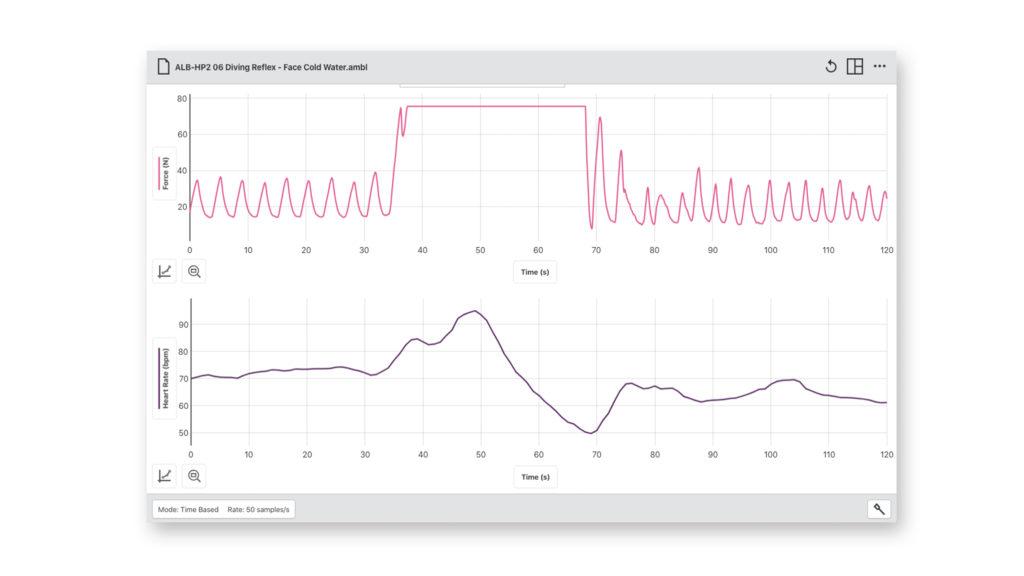All marine mammals have a reflex for diving in cold water. When cold water contacts the face and nostrils during a dive, heart rate and cardiac output decrease dramatically as blood is shunted away from the extremities and directed to the vital organs. Weddell seals of Antarctica can hold their breath for extended periods (20 minutes to an hour) and can dive to depths of 500 meters. However, the record for breath holding during a dive belongs to the beaked whale. As recently reported in The Journal of Experimental Biology, Cuvier’s beaked whales can dive to nearly 3000 meters and stay underwater for an extraordinary 3 hours and 42 minutes.
A much smaller version of the diving reflex occurs in humans and is easy to demonstrate in the lab using a few Vernier sensors and a large bowl of cold water. When the face contacts cold water (10°C or less) the diving reflex occurs, breathing is inhibited and heart rate decreases. This response is not observed during normal breath holding in air or when the face is placed in warm water. Heart rate will actually increase in these two conditions.

The sample data in the graph above show the diving reflex. A distinct drop in heart rate is observed as the subject held their breath and as the subject placed their face in a bowl of cold water. This diving reflex is most pronounced a few seconds into the “dive.”
With our free sample data, the experiment can be easily completed from home. Sample data for this experiment is available in our Experiment and Sample Data Library. With the Vernier Graphical Analysis™ or Graphical Analysis Pro app, your students can use the sample data to analyze results as they follow the experiment instructions.
Student instructions for this lab exercise from our Human Physiology Experiments Volume 2 lab book can be downloaded below.

